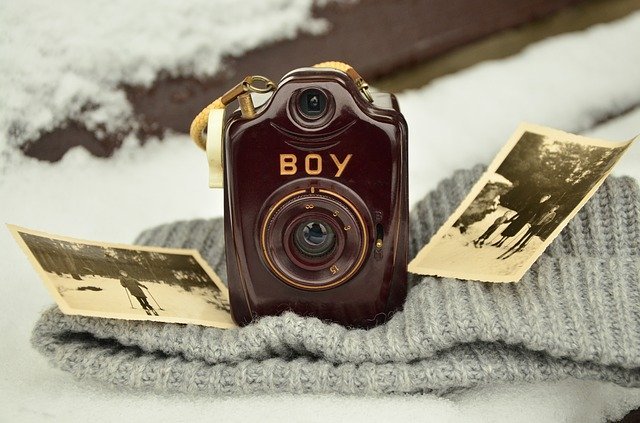
Most people love dabbling in photography. This is mostly because good photographers know how to take their time and get a perfect shot. This article contains some of the tips and tricks that photographers swear by achieve top-quality shots.
Try out new ideas, and don’t shy away from taking original photos. Good pictures show personal expression and convey a message. Do not take pictures that people have seen over and over again. Try out a creative style with your skills, and try unique angles.
To create pictures that resemble things like water colors, sketches, or oil paintings, use digital methods. Many software packages are available, with Adobe Photoshop being the most popular. It can immediately change photos into artworks by choosing the medium required within the filter option.
While the background is important, what the viewer is going to notice first is the foreground of the landscape. Focusing first and foremost on the foreground of a landscape shot will help you to produce a more striking photograph with greater depth.
It is a common misconception that a sunny day is perfect for photos. In reality, taking photos in the direct sun is one of the easiest ways there is to ruin an image. The sun can cause shadows, squinting, and highlights that do not flatter the subject. Whenever you possibly can, try taking your outdoor shots in the morning or the evening when the sun is lower and casts less light.
Pack your equipment for a trip carefully. Bring as many lenses you think you’ll need and never forget to have spare batteries and maintenance accessories. You should only take what you will use, and think about convenience.
The position that you use when holding your camera can make a big difference on the quality of your pictures. To keep your grip steady, hold your upper arms and elbows close to your sides and brace your hands at the camera’s bottom and sides. The movement of the photographer will be captured in the pictures. Holding the camera from the bottom and underneath the lens also helps prevent dropping your camera accidentally.
Having your batteries always charged helps you avoid missing any great shots. Digital cameras usually use quite a bit of battery power, usually when using LCD screens, so always make sure your battery is fully charged before using the camera. Another good suggestion is to bring along spare camera batteries so that you will never miss a photo opportunity.
Always choose your best photos to show. It is always beneficial to take multiple shots with various settings, but you do not have to show them all off, only the best ones should be shown. Keep things fresh and not repetitive. Just because you took a photo does not mean you have to show it. Showing the same type of photo repeatedly gets old fast. So keep it fresh while showing all your different photography skills.
Invest in a memory card with advanced ability to record a large number of images, so that you will not be limited in the quantity of shots you can take at any given time. A 16 gigabyte memory card will store all of your photos without the necessity of changing memory cards during a photo shoot. If you use a big memory card, you will be able to shoot using the RAW format. Using the RAW format will give you more flexibility when you are editing your photos.
While the background is important, what the viewer is going to notice first is the foreground of the landscape. The foreground in each shot should be modified to add depth and increase the overall impact within the frame.
When you are attempting to take a great photo, make sure you are close enough to the subject. Move closer if it is possible. It is very upsetting when you believe you have the perfect shot only to find that you can’t see the subject very well. Make it easier for yourself and for your viewers to see your subject clearly and vividly.

Before traveling with your photography equipment, take the time to carefully plan which equipment you need to take. Pack extra accessories and lenses so that you won’t miss out on any photographs during your trip because of poor planning. Don’t take more with you than you absolutely need.
You need not stand directly in front of an object to photograph it. Shoot from above or below your subject, move to the right and left, or find an unexpected vantage point, and shoot away.
When you are traveling, take small snapshots of intricate details. Certain features might not seem all that interesting at the time, but when you get back, those strange and interesting pictures will frame your memory of the trip in new ways. You could take photographs of street and road signs, foreign grocery products, coins and travel tickets.
If you don’t know a model, try to make them feel as comfortable with you as possible. Many people feel self-conscious or uncomfortable being put in front of a camera. So be nice, initiate a conversation, then ask them if you could take their picture. Reassure people that the goal of your photography efforts is to capture and create art, and not to violate their privacy.
When you are attempting to take a great photo, make sure you are close enough to the subject. Move closer if it is possible. Nothing is as bad as taking a photograph of something that is not close enough to see well. The result of a close shot will be a vivid picture that you will enjoy more.
Visit a thrift store to buy a film camera if you would like to test out the older film-based photography. Black and white ISO 200 film will take beautiful photos with an old time charm. After getting the film developed, consider having prints made onto a variety of papers, including fiber-based papers.
Digital cameras normally contain a built-in flash, that automatically turns on when the natural light is too low. Built in flashes are great for your average photographs, but for a more professional look, you may want to consider an external flash. Buy your camera and flash unit at the same time to ensure compatibility.
Usually in life we have been trained to see things that are centered and even as good. Although perfection is considered a positive thing, you should bear in mind that centering a photo on its subject is not necessarily perfect. Consider placing the subject of your picture a little off-center. Auto-focus features center in, and lock on the subject automatically that is in the camera’s view. Try manually adjusting and locking your focus before you take a picture.
When you are finally ready to start taking photographs, experiment with a variety of camera settings. Your photo quality will drastically increase!
When traveling to a new place, try to get some ideas of the types of things you should be shooting. For a quick insight into local areas that may be rich with potential photo subjects, give the nearest rack of postcards a spin. Usually the photos on these cards clue you in on popular and photo worthy local attractions and areas of interest, any of which usually make excellent subjects for your own. So, make an effort to visit these areas and attractions.


